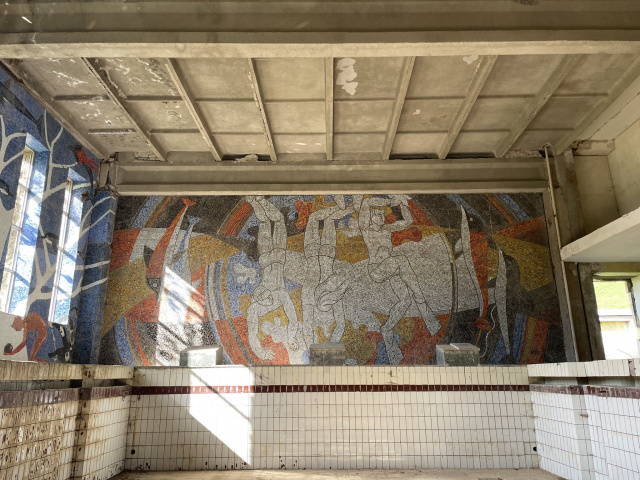Mosaics became popular in Soviet Armenain architecture in the late 1970s, when the modernistic architectural language was more or less settled in the handwriting of Armenian architects. Considering the state requirement of using architectural typologies (Decree no. 1871, date 1955), which resulted in boring and uncharacteristic architecture, architects sometimes appealed to mosaics in order to diversify bare, mute side façades of buildings. Sometimes instead of mosaics simple colour diversification of stones were used, which, according to architect Levon Khachatryan, would result in cheapening the overall look of the building. He further notes that mosaics art was itself considered an independent art from, the correct application of which could, to a certain extent, enrich architecture. However, simply altering stone colours as did some of the post 1970s architects, in cladding could be considered an inferior mimicry of mosaic principle undervaluing the overall quality of the building. On later stages, abstract ornamental mosaics became popular in the late 1970s and1980s, which mostly represented modernized versions of Armenian traditional ornaments derived from carpets and cross-stones.
Mosaics
Data Type
Encyclopedia
Music School after A. Spendiaryan, Yerevan
Rouben Zoubietyan and Van Khachatour,1971
Razmik Alaverdyan, Gourgen Mnatsakanyan, 1962
Complex of Armenian Research Institute of Architecture and Construction
Martin Mikaelyan, Avetis Aharonyan, 1957-1964
Institute for Physical Research
Makabeh Manouelyan, 1965






